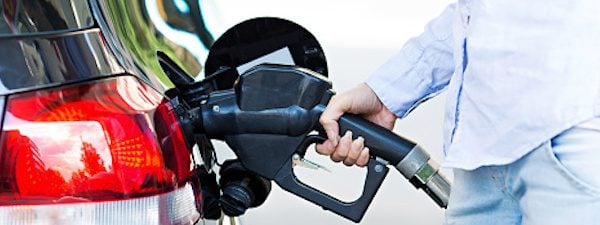Premium and ‘Top Tier’ Gas: When to Upgrade at the Pump
And why higher octane gas isn't always better for your vehicle.

Many, or all, of the products featured on this page are from our advertising partners who compensate us when you take certain actions on our website or click to take an action on their website. However, this does not influence our evaluations. Our opinions are our own. Here is a list of our partners and here's how we make money.
Premium and Top Tier gas sound good, but what’s really best for your car — and your budget?
In some cases, these types of fuel are indeed better for your car — but for different reasons. Premium gas, as opposed to regular, is a higher grade of fuel. It’s meant for high-performance vehicles and can cost as much as 50 cents more per gallon. Gas that meets Top Tier standards, on the other hand, has higher levels of engine-cleaning additives than non-Top Tier gas. It costs about three cents more per gallon, according to AAA.
So, when is an upgrade at the pump worth it?
Premium gas: required vs. recommended
For premium gas, the decision is simple, according to Michael Calkins, AAA’s manager of technical services. When to use premium comes down to two words: required or recommended.
Required: If your car’s owner’s manual (or the inside of the gas door) says that premium gas is required, then you have to use premium to avoid damaging your engine.
Recommended: When your owner’s manual (or the inside of the gas door) recommends premium you can still run your car on a lower grade fuel.
For cars that merely recommend it, premium gasoline may very slightly improve performance (increased horsepower) and fuel economy, according to a November 2017 study from AAA. But you likely won’t notice a difference in performance unless you pull out a stopwatch and run the quarter mile.
The bottom line: If your car doesn’t require premium, don’t bother. When you buy lower grade fuel, “The savings you get is much greater than the cost of the drop-off in fuel economy,” Calkins says.
» MORE: 5 easy ways to save money on gas
Top Tier gas: worth the extra cents
When it comes to Top Tier gas, now sold by most major oil companies, Calkins says the benefit is worth the slightly higher price. Top Tier gas, which applies to all grades of fuel, is recommended by AAA because it prevents carbon buildup in your engine. This buildup can reduce fuel economy and cause problems like rough idling, acceleration hesitation or engine knock, a rattling sound that occurs when gas ignites prematurely.
Fuel must meet a set of standards to use the Top Tier label. Oil companies essentially create their own blends of gasoline by mixing in detergents and additives to improve the quality of the bulk fuel they get from refineries. The additive package in Top Tier gas is more effective than the minimum standards for additives required by the government.
Top Tier gasoline, introduced in 2004, was designed to surpass these minimum standards “to better protect increasingly sophisticated engines from carbon buildup and deposits on the intake valves,” according to Consumer Reports.
Calkins adds that, if you’ve been using non-Top Tier fuel and have carbon buildup, switching to Top Tier gas will clean those deposits out of your engine. You can find retailers carrying Top Tier gas on the Top Tier program’s website, or you can check for a sign at the pump.
What about a higher octane of gas?
Each grade of gasoline has an octane rating that refers to how much it can be compressed before it ignites. It’s a measure of how well the gas can resist engine knocking — the rattling sound that occurs when it ignites prematurely.
Usually, premium gas has an octane rating of 92 or 93, while mid-grade has a rating of 89 and regular gas has a rating of 87, according to the Federal Trade Commission.
The octane rating of gas your car runs best on depends on how the engine is designed. Typically, high-performance cars require premium, because their engines have higher compression ratios, while other cars can run just fine on lower octane gas.
But using higher octane gas than your car requires isn’t actually better for your car.
The FTC sums it up this way: “In most cases, using a higher octane gasoline than your owner's manual recommends offers absolutely no benefit.”


